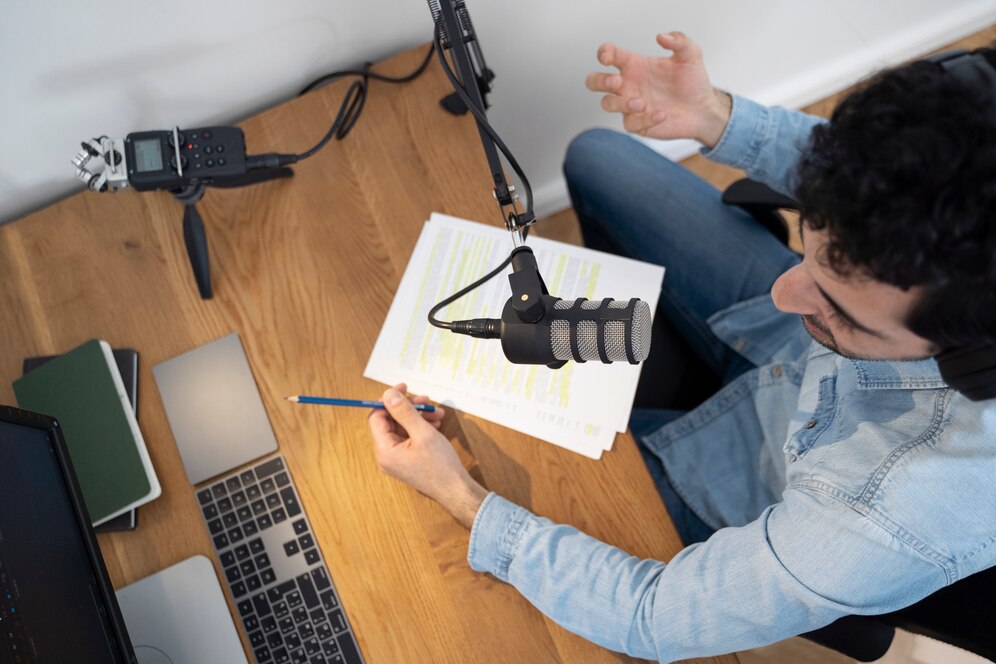
Imagine this: You’re a musician, a filmmaker, or maybe a startup founder with a story to tell. You’ve poured your heart into your craft, and now it’s time to share it with the world—or at least with the gatekeepers who can amplify your voice: journalists, promoters, or industry insiders. But how do you convince them you’re worth their time? Enter the Electronic Press Kit (EPK), your digital golden ticket. It’s more than just a file—it’s your first impression, your pitch, and your personality all rolled into one sleek package.
I remember the first time I tried to create an EPK for my band years ago. We were a scrappy group of dreamers, armed with a few decent tracks and a lot of ambition. I threw together some blurry photos, a half-baked bio, and a SoundCloud link, thinking, “This’ll do.” Spoiler: It didn’t. We got zero responses. It wasn’t until I dug into what makes an EPK effective—not just functional—that doors started cracking open. Today, I’m sharing everything I’ve learned, plus insights from industry pros, to help you craft an EPK that doesn’t just sit in someone’s inbox but demands attention.
In this guide, we’ll walk through every step of creating an EPK that shines, from nailing your bio to choosing visuals that pop. Whether you’re a newbie or a seasoned pro looking to level up, you’ll find actionable tips, real-world examples, and a few hard-earned lessons from my own journey. Let’s dive in.
What Exactly Is an EPK, and Why Do You Need One?
An EPK is a digital portfolio that showcases who you are, what you do, and why you matter—all tailored to the people who can help you grow. Think of it as a resume meets a hype reel, but with personality. Musicians use EPKs to pitch to venues and labels, filmmakers send them to festivals, and even small businesses use them to woo press or investors. It’s your one-stop shop for credibility and charisma.
Why does it matter? In a world where inboxes are flooded and attention spans are short, a killer EPK cuts through the noise. According to ReverbNation, a platform that’s helped thousands of artists get noticed, a well-crafted EPK can increase your chances of landing press coverage or a gig by up to 50%. It’s not just about having one—it’s about having one that works.
Back in my band days, I didn’t get this. I thought slapping together a PDF was enough. But an effective EPK isn’t a data dump; it’s a story. It’s the difference between someone skimming your email and hitting delete—or forwarding it to their editor with a note that says, “Check this out.”
Step 1: Start with a Compelling Bio That Hooks Them
Your bio is the heart of your EPK. It’s not just a list of facts—it’s your chance to make someone care. A great bio answers three questions: Who are you? What’s your story? Why should they pay attention?
Keep It Short, Sweet, and Specific
Aim for 150–300 words. Too long, and you lose them; too short, and you seem shallow. Focus on what sets you apart. Are you a folk singer who grew up busking on city streets? A tech founder who coded your first app in a garage? Lead with that. For example, Grammy-nominated artist Maggie Rogers once described herself as “a banjo player turned electronic producer,” instantly painting a vivid picture.
Tell a Story, Not a Timeline
Skip the “born in 1995” snooze-fest. Instead, weave a narrative. When I rewrote my band’s bio, I started with: “We met in a dive bar, bonded over broken guitar strings, and turned our late-night jams into a sound that’s raw and real.” It’s not just facts—it’s a vibe. Check out Bandzoogle’s bio tips for more on crafting a story that sticks.
Add a Dash of Credibility
Drop in achievements—press quotes, awards, or big gigs—but don’t brag. “Featured in Rolling Stone” beats “I’m the best thing since sliced bread.” If you’re new, highlight passion or hustle: “We’ve played every open mic in town and built a fanbase one sweaty night at a time.”
Step 2: Curate Media That Pops—Photos, Videos, and More
Your EPK’s visuals are your handshake. They need to grab attention and scream professionalism without saying a word.
High-Quality Photos Are Non-Negotiable
Blurry iPhone pics won’t cut it. Invest in a pro shoot—or at least a friend with a good camera. Aim for 3–5 shots: a headshot, a group or action shot, and something artsy that shows your vibe. My band once used a grainy live photo that looked like Bigfoot footage. Lesson learned: Clarity matters. Shutterstock offers affordable stock options if you’re in a pinch, but custom is king.
Video: Your Secret Weapon
A short video—1–3 minutes—can seal the deal. Think live performance clips, a behind-the-scenes peek, or a quick “meet the team” reel. When I added a video of us jamming in a basement, our response rate tripled. Tools like Vimeo make hosting and embedding a breeze.
Audio Samples for Musicians
If you’re an artist, include 2–3 tracks. Pick your best, not your oldest. Embed them via SoundCloud or a similar platform—downloadable files are a hassle for recipients.
Step 3: Highlight Your Achievements Without Bragging
This section—sometimes called “Press” or “Highlights”—is your proof of worth. It’s where you flex, but subtly.
Press Clippings and Quotes
Got a review from a blog or a shoutout in a podcast? Include a snippet with a link. “A voice that haunts and heals” from a local paper sounds better than “People like us.” No press yet? No sweat—skip it or mention upcoming shows to show momentum.
Stats That Impress
Numbers speak. “Over 10,000 streams on Spotify” or “Sold out a 200-seat venue” adds weight. My band once bragged about “50 fans on Facebook” (yikes), but later, “Opened for a national act” carried real clout.
Awards and Accolades
Won a contest? Nominated for something? List it. Even small wins count—credibility builds trust.
Step 4: Make Contact Info Crystal Clear
This sounds basic, but you’d be shocked how many EPKs bury the “how to reach me” part. Include:
- Your email (professional, like [email protected], not [email protected])
- Phone number (if you’re comfy sharing)
- Social media handles—link to Instagram or wherever you’re active
- Website, if you have one
I once forgot this step and wondered why no one called. Don’t be me—make it easy.
Step 5: Design It to Dazzle (But Keep It Simple)
Your EPK’s look matters as much as its content. A clunky design screams amateur; a sleek one says pro.
Pick the Right Format
PDFs are standard—easy to share and view. Tools like Canva offer free templates that look sharp. One-page EPKs work for quick pitches; multi-page ones suit deeper dives.
Branding Is Everything
Use consistent colors, fonts, and logos that match your vibe. My band’s EPK went from Comic Sans chaos to a clean black-and-red theme, and it felt like a glow-up.
Mobile-Friendly Matters
Most people check email on their phones. Test your EPK on a small screen—big text, clear images, no tiny links.
Step 6: Tailor It to Your Audience
One size doesn’t fit all. A venue booker wants different info than a journalist or investor.
For Press
Focus on story hooks and press-ready assets (high-res photos, quotes). Pitch why you’re newsworthy.
For Gigs
Highlight live experience, crowd size, and a video of you rocking a stage.
For Labels or Investors
Emphasize stats, growth, and vision. Show you’re a safe bet with upside.
I once sent the same EPK to a club and a magazine—crickets. Tailoring takes time but pays off.
Comparison Table: EPK Must-Haves vs. Nice-to-Haves
| Feature | Must-Have | Nice-to-Have | Why It Matters |
|---|---|---|---|
| Bio | Short, engaging story | Quirky fun facts | Hooks the reader instantly |
| Photos | 1–2 pro-quality shots | Full photoshoot gallery | Visuals build trust |
| Media (Video/Audio) | 1 standout clip or track | Multiple samples | Shows your talent in action |
| Contact Info | Email and social links | Phone number | Makes follow-up seamless |
| Achievements | 1–2 key wins or stats | Full press kit | Proves you’re legit |
| Design | Clean, branded layout | Animated elements | First impressions stick |
Why This Table Rocks
It breaks down the essentials so you can prioritize. Start with the must-haves, then layer in extras as you grow.
Step 7: Test and Tweak Before You Send
Before hitting send, road-test your EPK. Share it with a friend or mentor—someone honest. Ask: Does it grab you? Is anything confusing? I once sent an EPK with a broken video link—embarrassing and avoidable.
Also, double-check file size. Over 10MB? Compress it. No one wants a inbox-clogging monster.
FAQ: Your EPK Questions, Answered
What’s the difference between an EPK and a website?
An EPK is a portable, focused pitch; a website is your broader online home. Think of the EPK as a highlight reel, the site as the full movie.
How often should I update my EPK?
Every 3–6 months, or after big wins (new press, gigs, releases). Keep it fresh—stale EPKs feel lazy.
Can I make an EPK if I’m just starting out?
Yes! Focus on your story and potential. A killer bio and one great photo can carry you far.
Should I pay for a designer?
Not necessarily. Free tools like Canva work wonders, but if budget allows, a pro can elevate it.
How do I get press for my EPK?
Start small—local blogs, podcasts. Build clips to beef up future versions.
Conclusion: Your EPK Is Your Launchpad—Make It Soar
Creating an effective EPK isn’t just about checking boxes—it’s about capturing your essence in a way that resonates. It’s the late nights perfecting your craft, the thrill of a crowd’s applause, the quiet moments dreaming bigger—all distilled into a package that says, “This is me, and I’m worth your time.”
From my early flops to the wins that followed, I’ve learned this: An EPK isn’t static. It grows with you. Start simple—nail the bio, grab some photos, tell your story. Then tweak, test, and tailor it as you go. The goal isn’t perfection; it’s connection. Whether you’re pitching a dive bar or a major label, this is your shot to shine.
So, what’s next? Open your laptop, pull up that half-finished bio, and start crafting. Send it to someone you trust for feedback. Then hit send on that first pitch. You’ve got this—and your EPK is the key to proving it. Where will it take you? That’s the exciting part: You won’t know until you try.

